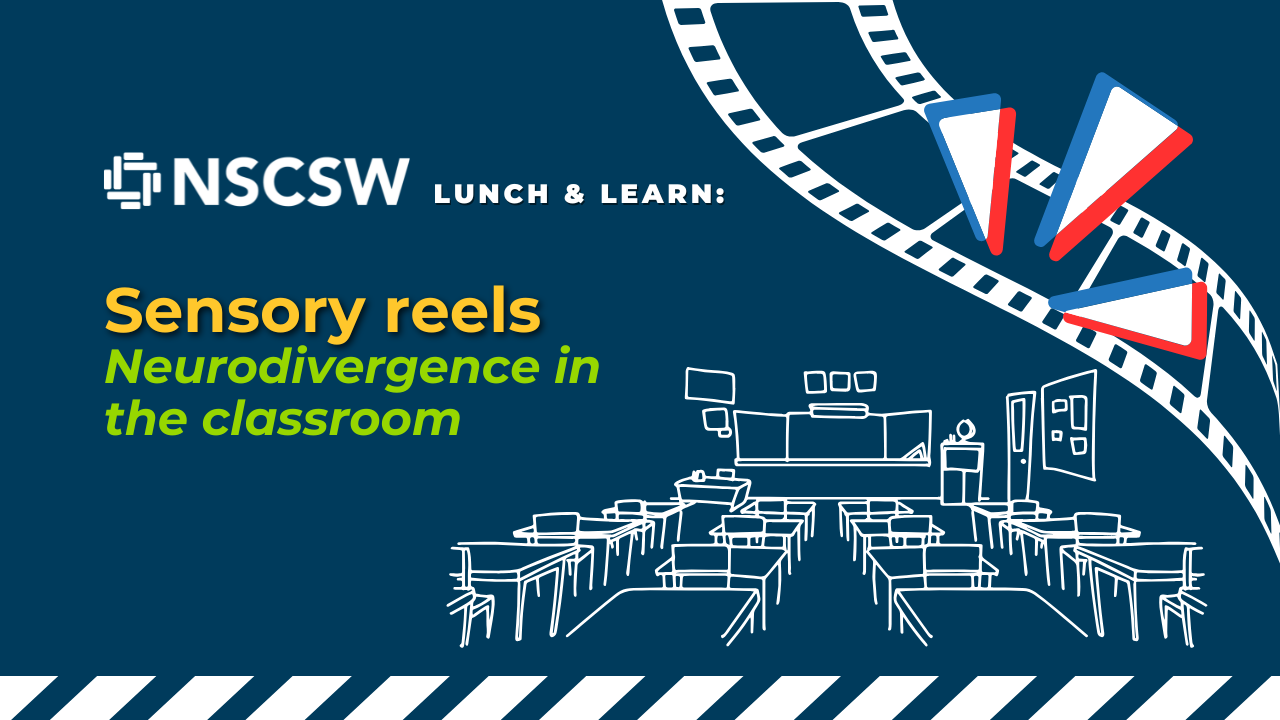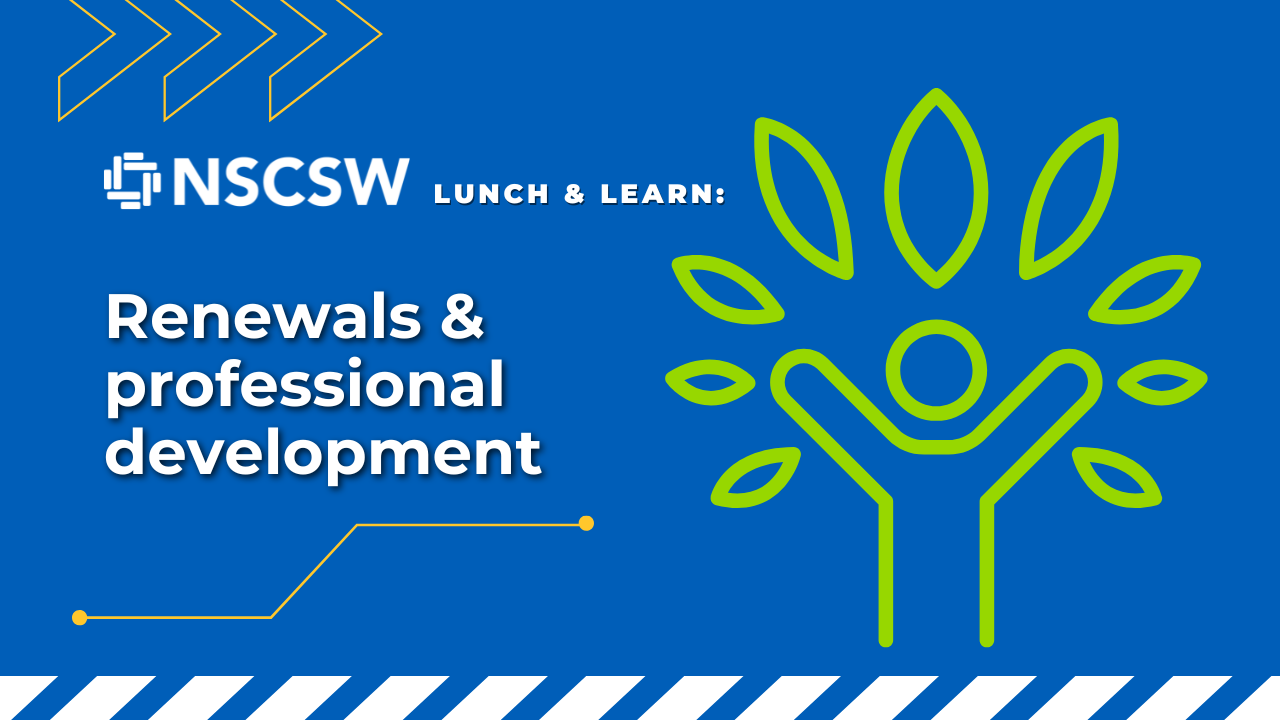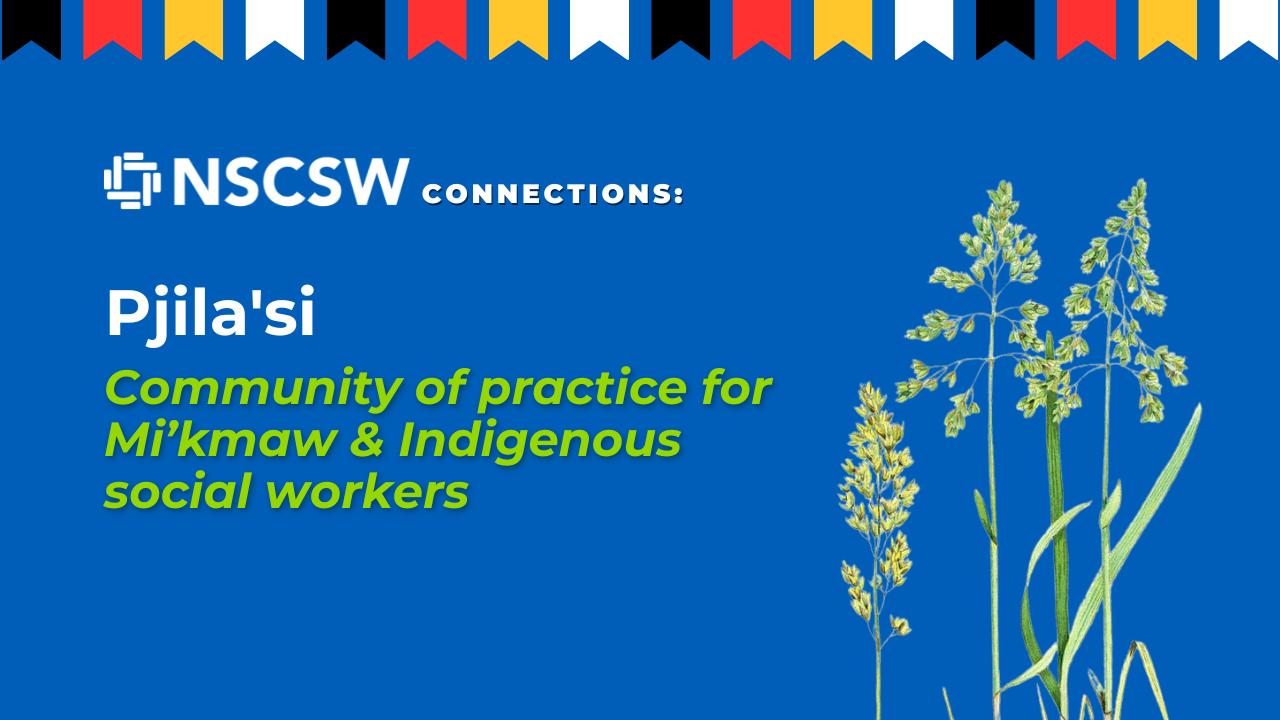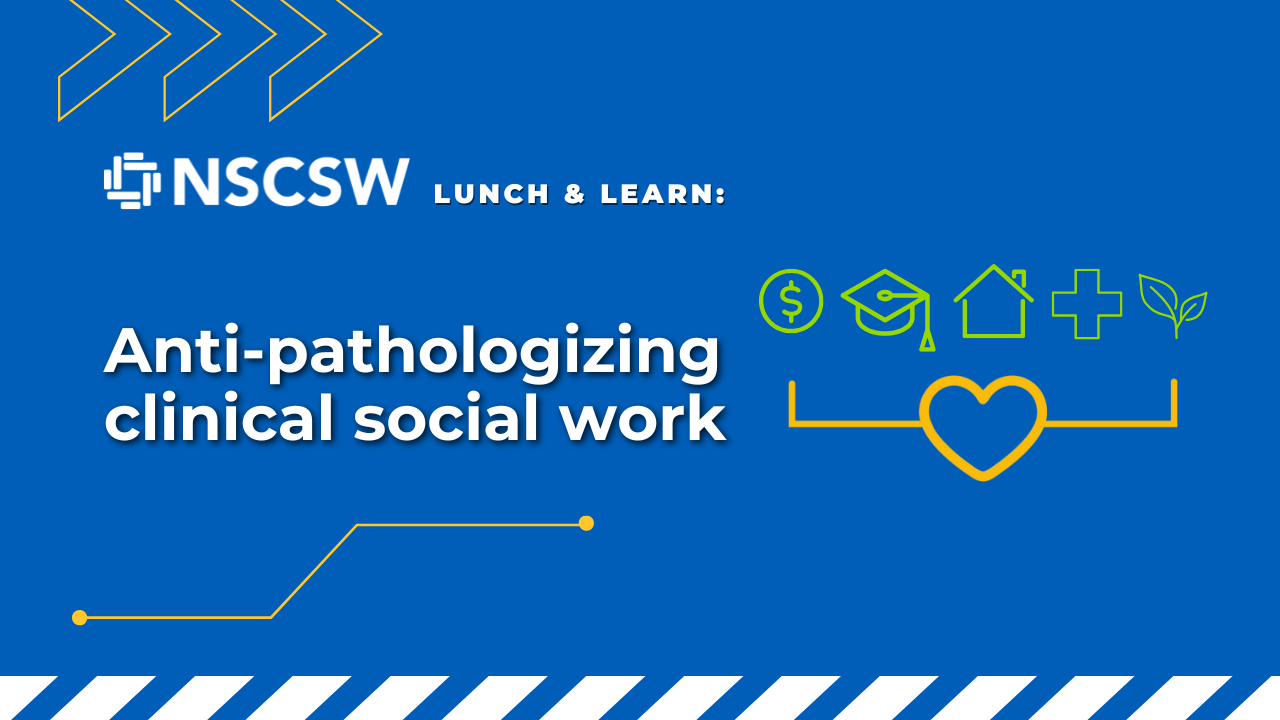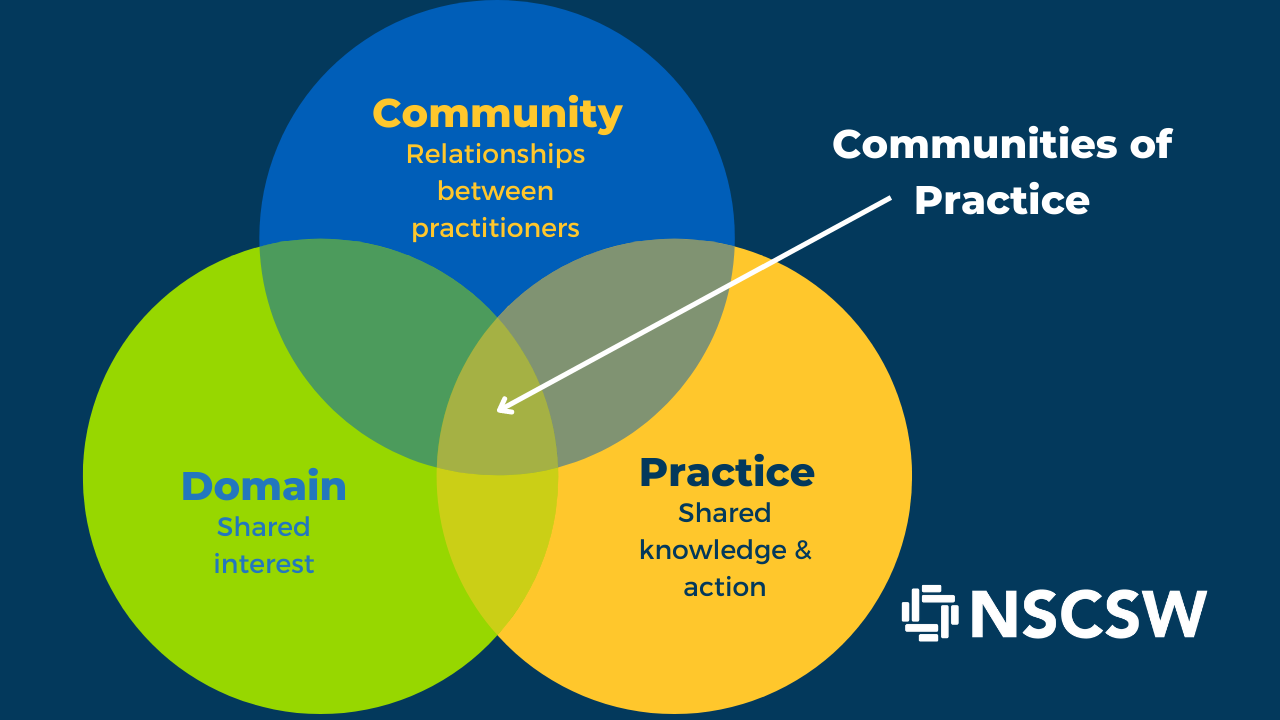By Kristina Fifield, RSW-Clinical Specialist
I’ve been reflecting on our time together at last month’s mini-conference on transforming social work’s role in addressing gender-based and intimate partner violence (GBV/IPV).
If you were able to join us, I’d love to know how the experience felt for you — what stayed, what felt uncomfortable, and what opened or shifted in your body as we co-created and shared space.

Considering where we stand and how we got here
Since becoming a social worker, I’ve witnessed —again and again— how colonial, patriarchal, and misogynistic systems shape not only survivors’ lives but also how we are asked to practice. Survivors of gender-based violence carry the weight of systemic injustices in deeply embodied ways, and our bodies feel those pressures too.
I want to name something many of us hold quietly: the moral injuries that come with doing gender-based violence work. Coercion —both subtle and overt— shapes policy, practice, and the very systems we are expected to work inside. Many of these structures were built on control, risk-aversion, and surveillance, rather than relationship, trust, or self-determination. When survivors are failed by those systems, we witness not just harm but betrayal trauma at an institutional level — trauma that reverberates in survivors’ bodies and in ours.
You’re invited to hold this with me: The work is complex, layered, and often carried out within systems that were never designed to support relational, trauma-sensitive practice. And yet, here you are — choosing to show up, to stay connected, and to reimagine what becomes possible when we practice in ways that honour dignity, relationship, and nervous-system safety.
During the mini-conference, my intention wasn’t simply to share concepts. I wanted to model co-creating space and relational practices rooted in:
- attunement to our bodies,
- non-coercion and choice-making,
- non-attachment to outcome and expectations,
- curiosity over assumption, and
- sharing power and honouring survivors as the experts of their own lives.
I’ve also been noticing how much I’ve shifted my practice over time in doing this work. Over the years, I’ve become more aware of how deeply systems influence my nervous system — my privilege, my sense of safety, how I breathe, and how much presence I can access in any given moment.
I often think back to my early years on overnight shifts at Bryony House — working alone, new to the GBV field. I was surviving inside a house full of survivors and their children, witnessing their suffering, their trauma responses, and the ways those responses were often misunderstood. At 23, without internal supervision and witnessing colleagues and their own intense trauma responses, working within an organization in survival mode, and without the resources we desperately needed, the intensity of that environment began to reshape how I related to myself and to others. The threats and encounters with individuals causing harm, the constant holding of pain, and the repetition of misunderstood trauma responses taught me early what it means to work from a place of chronic hyperarousal — and how deeply that lands in the body, mind, and heart.
With time and reflection, I can see how many of us —colleagues, friends, and people who have carried this work for decades— live with chronic hyperarousal or, for some, chronic hypoarousal. These patterns are not simply about the work; they emerge from longstanding absences of systemic support, containment, and resourcing for those who provide care.
Something I continue to witness —and sit with heavily— is the disproportionate responsibility placed on diverse colleagues, particularly those deeply rooted in their own communities. So many are expected to carry not only their professional roles but also community trauma, community expectations, and the realities of living in the same spaces where violence, harm, and systemic inequities continually unfold. So much of this labour is unacknowledged, unsupported, and carried in isolation — despite being directly tied to long histories of systemic oppression and ongoing disproportionate harm.
Holding this, I am increasingly aware of my own privilege in this work — how my identities and social location shape the risks I take, the protections I have, and the ease with which I can move through certain systems. That awareness calls me into ongoing responsibility: to use my voice, to speak up for change, to intervene when silence would reinforce harm, and to show up as an ally who is accountable and grounded in relationship. Allyship, for me, isn’t a role I claim; it’s a practice I commit to — one that requires humility, action, discomfort, and a willingness to take risks for something larger than myself. I learned early in my career that remaining silent about harm becomes a painful moral injury — one that eroded my relationship with myself.
Much of my career has been spent advocating not just for change outside my workplaces, but for the kinds of structures, supervision, and resourcing and supports that could better hold survivors — and better hold the social workers, advocates, and support workers who walk alongside them, especially those whose identities mean they carry additional layers of responsibility, vulnerability, and exposure. This is part of why I believe so strongly in our shared responsibility to be trauma stewards in gender-based violence work.
At its core, I believe the epidemic of gender-based violence is an epidemic of disconnection and disempowerment. Individuals who cause harm are often profoundly disconnected — from themselves, from others, and from their own capacity for accountability. And survivors, in their own ways, often experience disconnection too — not as a failing, but as an adaptive, protective response. Many survivors learn to leave their bodies to survive what is unbearable. Dissociation, numbness, shutting down, or feeling far away from one’s sensations are not signs of weakness; they are signs of a body doing what it must to stay alive.
Part of our work, then, is honouring that wisdom and supporting survivors in reconnecting at a pace that feels safe, consensual, and chosen — never forced.
I hold onto the hope that through relational practice, collective care, and tending to our own nervous systems, we can contribute to a different way forward — one rooted in connection, compassion, curiosity, accountability, and possibility.
A question that often emerges
One question that surfaced more than once after the training —and one I’ve been asked many times— is:
“If we truly practice non-coercion and shift toward trauma-sensitive relationships, does that mean we will have no boundaries with survivors?”
I don’t think this question reflects individual uncertainty. I think it reflects the conditions and systems we practice within. Many of us are carrying the cumulative weight of this work. These systemic stressors shape our bodies. They create environments where risk-aversion feels like survival—and often shows up as coercion, not because we intend harm, but because our bodies are trying to stay “safe” in systems that do not hold us.
From a decolonial perspective, it’s also essential to acknowledge how colonial and patriarchal frameworks continue to shape social work and GBV practice—structuring the policies we follow, the resources we access, and the ways we are taught to respond to survivors. Anti-oppressive and decolonizing practice asks us to question these inherited systems, resist the impulse to control, and intentionally co-create ways of being that honour relationship, respect, sovereignty, and self-determination.
So, a trauma-sensitive, relational approach is not boundary-less. It creates clarity without control. It centers consent, collaboration, and shared humanity. In this frame and practice, boundaries are not walls. They are containers for safety—flexible enough to be responsive, steady enough to build trust, and grounded enough to support survivors’ agency, voice, and choice.
The nervous system realities we hold with survivors
Survivors often share that they struggle to trust their perceptions, their bodies, and others’ intentions. Systemic oppression, institutional betrayal, and repeated trauma shape not just someone’s story—they shape their nervous system. These forces can erode interoception, narrow the window of tolerance, and heighten external vigilance, because threat has been real, ongoing, and often unaddressed by the very systems meant to offer support. Our bodies respond to this, too. You are invited to reflect: Can you regulate your own body in these moments? How might modelling regulation support co-regulation with survivors?
Even with experience and training, our nervous systems absorb the conditions we practice within — chronic underfunding, crisis-driven workloads, exposure to trauma, and the emotional labour of holding so much for others. From an anti-oppressive and decolonial perspective, it’s also important to name that these nervous system realities are not individual failures—they are shaped by colonialism, racism, misogyny, ableism, and the broader social conditions that produce both violence and burnout.
This is why our embodied awareness is essential.
Tending to our breath, pace, and presence is part of ethical practice. It supports us in showing up with clarity rather than reactivity; with boundaries rooted in care rather than fear; and with enough inner steadiness to avoid replicating the coercive dynamics survivors already navigate. Attuning to our own bodies is also part of accountability—ensuring we do not unconsciously reproduce harm while working inside systems that make coercion feel like the “safe” or efficient choice.
Embodied awareness becomes both a protective practice and a relational offering. It is one way we honour survivors’ autonomy, dignity, and self-determination while honouring our own humanity within this work.
Calls to action: Turning inward
During the 16 Days of Action for Violence Against Women, you are invited to turn inward. Some questions for inquiry I hold in my own practice are:
- How does my body show up in GBV work, in ways that either open or close space for connection?
- What does co-regulation look and feel like between me and others?
- How do I notice when a survivor is within or outside their window of tolerance—and what is my role in supporting them there?
- What happens in me when there’s a rupture, and can I stay present long enough for repair?
This kind of embodied self-connection is relational. It grounds us, protects us, and is ethically necessary when we are walking beside others who carry trauma. Our bodies hold the history of our systems, our fears, and our patterns, and when we bring attention to them, we bring attention to the relationships we are in.
I also want to name honestly: this work asks us to enter the unknown and the uncomfortable, over and over. It asks us to sit with complexity, contradiction, and the places where we don’t yet have answers. And it asks us to look at ourselves in relation to others.
I have caused harm in my relationships with survivors — not from intention, but from conditioning, fear, overwhelm, and systems that live in my body. Returning to these truths is part of my commitment to relational practice and accountability. It is a reminder that fostering trauma-sensitive relationships is not a destination — it is an ongoing practice.
One of the most transformative shifts for me has been learning to befriend fear — to meet the sensations in my body with curiosity instead of judgment. This practice has changed how I show up with survivors and families. It helps me respond rather than react, stay present rather than collapse, and meet rupture with openness rather than defensiveness. And in doing so, it deepens the relational space where trust, repair, and growth can happen.
We are living in a time where violence, polarization, and extremism are intensifying. These conditions have an impact on our bodies, mind and heart. They pull us into urgency, fear, and reactivity. Befriending yourself—your breath, your heartbeat, your limits, and your rhythms—is not separate from your work. It is the work.
It will shape how you meet survivors.
It will shape your capacity to remain relational when things become nuanced or uncomfortable.
It will shape your ability to repair when harm happens.
Tending to your own nervous system is activism, too. Try maybe noticing your breath, noticing your body, or simply asking, “What do I need in this moment?” Allow feelings to move through you without judgment, expanding your capacity to be present for yourself and others.
Calls to action: Being in community
The 16 Days of Activism invite us to connect — to ourselves, to each other, and to the communities we are part of. Being together, witnessing one another, and holding space can be a quiet yet powerful form of care and resistance.
Consider attending a community gathering or vigil in your area. Joining an event reminds us that we are not alone and that collective presence matters. December 6, the National Day of Remembrance and Action on Gender-Based Violence, is a moment to pause, reflect, and act in solidarity with survivors.
You’re also invited to take one small daily action. It might be a pause, a conversation with a colleague, reading a survivor’s story, supporting a local organization, or resting when your body asks for it. Small actions shift culture and have meaning.
Sharing gratitude
I hold deep gratitude for the NSCSW, and for Robert Wright’s powerful opening remarks, which grounded the day with truth, clarity, and courage. I am grateful for every survivor and community member who spoke, and for the honesty, vulnerability, and wisdom you brought into the room.
A very special acknowledgment to the survivors and families I have the honour and privilege of walking alongside in your journeys. You shape my practice, my ethics, and my understanding of what relational social work truly is. You continue to teach me what accountability, presence, and connection look like in real time.
Deep gratitude to Alec for stepping up in your leadership role and naming the role of social workers in this moment — with clarity, courage, and care. Your willingness to hold complexity and to push our profession forward matters.
And an especially heartfelt thank you to Tyler. It has been an absolute joy to co-create this work with you. Your steadiness, humour, insight, and commitment to relational practice make this work feel possible.
Our time together on November 24 felt like a beginning — I hope it is the first of many opportunities to come together and co-create a relational response to the epidemic of gender-based violence.
You are invited to notice this:
You bring gifts.
You carry wisdom.
You matter here.
I appreciate you.
We’re in this together.
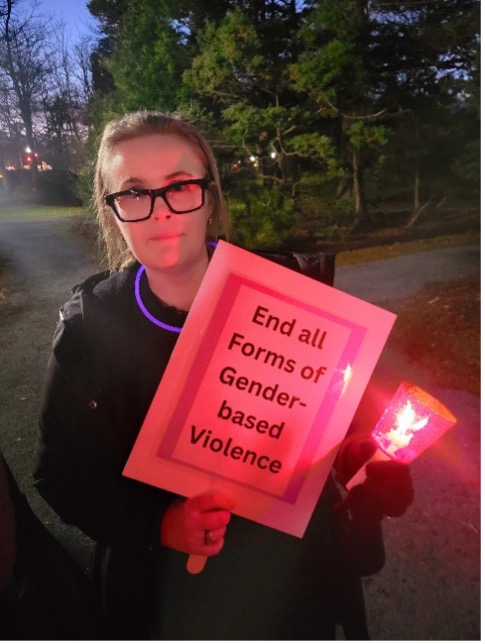
Kristina Fifield (she/her), MSW, RSW, CCTP, Certified EMDR Trauma Therapist
Kristina is an intersectional feminist social worker who supports survivors and families impacted by gender-based and family violence. Her therapeutic practice is deeply rooted in principles of intersectionality, equity, trauma-informed care, and social justice-driven community healing.
Kristina participated in the Mass Casualty Commission Public Inquiry and co-authored a report for the commission highlighting systemic issues related to GBV for marginalized survivors. In 2023, she was appointed to the Progress and Monitoring Committee to represent the gender-based violence and advocacy sector.
Kristina advocates for the elimination of the abusive use of non-disclosure agreements (NDAs). She co-facilitated NDA Informed training across Canada and continues to bring awareness to the abusive use of NDAs through an intersectional GBV lens. She believes that silencing survivors of GBV with NDAs is an injustice that requires government leaders to act.
Her work on the advisory committee for the LEAF’s Accountability Project and co-leading the GBV Advocacy Coalition in Nova Scotia underscores her commitment to promoting accountability for GBV.
Read more of Connection
- Responding to the epidemic of gender-based violence: Reflections & invitations for the 16 Days of Action
- Healing in the crossfire: Clinical social work in a genocide
- Healthcare erosion: “Why didn’t you press the button?”
- Food, Body, and Bias: Why Your Words Matter
- Developing a standard of care for social work practice with people who use alcohol and drugs










